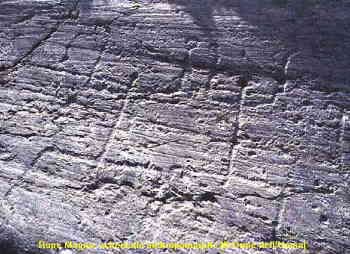by Footsteps of Man
Rock Art in Valtellina home
Bronze Age
 The central problem in (middle) Bronze Age Rock Art is the so-called "orant" (praying man) figure. Thus believed Neolithic in Anati's interpretation, we can find many elements making a Bronze Age attribution more suitable.
The central problem in (middle) Bronze Age Rock Art is the so-called "orant" (praying man) figure. Thus believed Neolithic in Anati's interpretation, we can find many elements making a Bronze Age attribution more suitable.
- All engraved surfaces showing "orants" salso how Iron Age figures (mostly warriors).
- No such figures were found superimposed by Copper Age engravings.
- And also, like in the Rupe Magna, many "orants" have been engraved in the same positions of armed figures.
 The most famous figures of the Rupe Magna were called by Davide Pace (the discoverer) "oranti saltici" (jumping praying figures).
The most famous figures of the Rupe Magna were called by Davide Pace (the discoverer) "oranti saltici" (jumping praying figures).
We can find (sector JA) six schematic male figures, paired two by two. They are of uncommon dimensions, being 80 cm long. They show orthogonal raised arms, with a circle in one hand and an engraved line in the other. These objects have been respectively interpreted as a round shield and as a stick or a little sword.
So the entire scene seems to show a dance with weapons. Also in Valcamonica (rock 35 of Naquane) we can find some big figures of armed schematic anthropomorphs.

RockArtNet

Cultural Heritage
Virtual Heritage
Tel +39-364-433.983 - fax +39-364-43.43.51